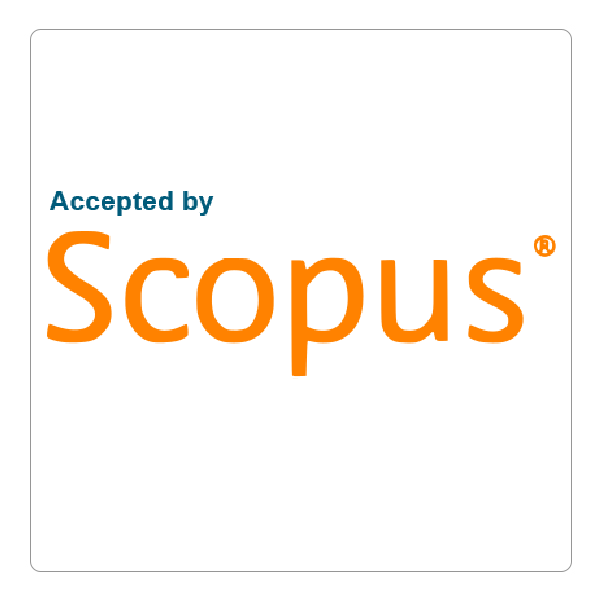How to Cite This Article
ShakirAgha, Nabaz Fisal; Yaseen Al-khayat, Zakariya Abdullah; and FatahAlharmni, Kawthar Ibrahim
(2018)
"Incidence of Cutaneous Leishmaniasis among Patients Presented to Hawler Teaching Centre for Dermatology Diseases, Erbil-Iraq, From January 2015 to December 2017,"
Polytechnic Journal: Vol. 8:
Iss.
3, Article 6.
DOI: https://doi.org/10.25156/ptj.2018.8.3.247
Document Type
Original Article
Abstract
Background and objective: To determine the incidence of cutaneous leishmaniasis (CL) in Erbil province. Methodology: A cross-sectional, descriptive study was performed in the Hawler teaching center for dermatology diseases and carried out with the collaboration of prevention Health Department, Erbil Medical Technical Institute, Erbil Polytechnic University, with Department of Microbiology and Anatomy & Histology, College of Medicine, Hawler Medical University, Erbil, Iraq. All the patients who presented at the dermatology clinic during the period from January 2015 to December 2017 were referred cases from health centers outside Erbil center. A small amount of aspirated fluid was taken and smeared on a clean glass microscope slide then left it to dry, then fixed using 70% methanol for 30 seconds and left it to dry again. The diagnosis was dependent mainly on clinical examination in addition to Giemsa stain. Results: During the study period, the total skin diseases cases which were referred to this center was 2871, while the number of cutaneous leismaniasis among the total dermatological cases was 1938 (67.5%) and the highest number of cases 848 (43.8%) was in the year 2016.All patients were referred from two districts in Erbil governorate: Makhmur & Kalak.Makhmur district had the highest percentage of cases1407 (72.6%) with P-value (P ≤0.01). Rural patients were of higher number and percentage in comparison to urban 1083 (55.9) with P-value (P ≤0.01). Regarding occupation, the highest percent of cases was in children 650 (33.5%) followed by students 462(23.8%). The highest number of cases was recorded during February 663(34.2%) & January 369 (19%) while the lowest rate of cases was registered during July 4(0.2%).The participant’s ages ranged from 10 months to 61 years. Males had the highest percentage of distribution than females 1129(58.3%) with P-value (p≤ 0.05).Males were distributed in a higher percentage in regarding to both age groups of (below & above 15 years) as 671(60.3%) 458(55.4%) respectively and P-value (p≤ 0.05).Clinically, 51.4% of patients had one lesion P-value (P ≤0.01), 52.3% of patients had wet type P-value (P ≤0.01). Most lesions were found on both limbs (56.9%) with P-value (P≤0.01). According to stain results, 1372(70.8%) of the cases were positive to Giemsa stain while 566 (29.2%) cases clinically diagnosed by an experienced dermatologist.Conclusions: Cutaneous leishmaniasis is endemic in Makhmur & Kalak districts .Males was infected in higher percent than females and this may be due to cultural, occupational and social factors
Publication Date
11-1-2018
References
1- World Health Organization, 2010.Control of the leishmaniasis.Report of a meeting of the WHO expert committee on the control of Leishmaniases.WHO Technical Report Series. Geneva: (949), 22–26 March.
2- Abdulsadah A.Rahi, 2013. Cutaneous Leishmaniasis in Iraq: A clinico epidemiological descriptive study. Sch. J. App. Med. Sci., 1(6), p:1021-1025.
3- Ready PD, 2013.Biology of Phlebotomine sand flies as vectors of disease agents. Ann Rev Entomol, 58, p:227-250.
4- Patz JA, Graczyk TK, Geller N, Vittor AY, 2000.Effects of environmental change on emerging parasitic diseases. Int J Parasit, Nov; 30, p: (12-13).
5- Tabibian E, Shokouh SJH, Dehgolan SR, Moghaddam AD,Tootoonchian M, Noorifard M, 2014.Recent epidemiological profile of cutaneous leishmaniasis in Iranian military personnel. J Arch Mil Med. February; 2(1), p: e14473.
6- Shujan R. Hassan 2017.Epidemiological Study of Cutaneous Leishmaniasis in Tuz.Int. J. Curr.Microbial. App. Sci, 6(1), p: 477-483.
7- Dehghani R, Kassiri H, Mehrzad N, Ghasemi N,2014.The prevalence, laboratory confirmation, clinical features and public health significance of cutaneous leishmaniasis in Badrood city, an old focus of Isfahan Province. Journal of Coastal Life Medicine; 2(4), p: 319-323.
8- Dawit G, Girma Z, Simenew K, 2013.A review on biology, epidemiology and public health significance of leishmaniasis. Journal of Bacteriology & Parasitology, 4:166, ISSN: 2155-9597.
9- Al Samarai AM, AlObaidi HS, 2009 .Cutaneous leishmaniasis in Iraq. J Infect Developing Countries; Mar 1; 3(2), p: 123-129.
10- Kassiri H, Kassiri A, Lotfi M, Farajifard P, Kassiri E, 2014.Laboratory diagnosis, clinical manifestations, epidemiological situation and public health importance of cutaneous leishmaniasis in Shushtar County, Southwestern Iran. J. Acute Dis.vol. 3(1), p: 93-98.
11- Aytekin S, Ertem M, Yağdıran O, Aytekin N, 2006.Clinico-epidemiologic study of cutaneous leishmaniasis in Diyarbakir Turkey. Dermatology J., 12 (3), p: 14-17.
12- Khosravi A, Sharifi I, Dortaj E, Aghaei Afshar A, Mostafavi M, 2013.The present status of cutaneous leishmaniasis in a recently emerged focus in south-west of Kerman Province, Iran. Iranian Public Health J., 42(2), p: 182-187.
13- Kassiri H, Mortazavi HS, Kazemi SH., 2011.Epidemiological study of cutaneous leishmaniasis in Khorram-Shahr County, Khuzestan Province, South-West of Iran. Jundishapur J Health Sci; 3(4), p: 11-20.
14- Al-Obaidi MJ, Abd Al-Hussein MY,Al-Saqur IM, 2016.Survey Study on the Prevalence of Cutaneous Leishmaniasis in Iraq.Iraqi Journal of Science; Vol. 57, No.3C, p:2181- 2187.
15- Akcali C, Culha G, Inaloz HS, et al., 2007.Cutaneous leishmaniasis in Hatay. Turk Acad Dermatol J., 1 (1), p: 1-5.
16- Al-Mafraji KH, Al-Rubaey MG, Alkaisy KK, 2008 .Clinco-Epidemiological Study of Cutaneous Leishmaniasis in Al-Yarmouk Teaching Hospital. Iraqi J. Comm. Med. Jul. Vol. 12, No.21, p: 6-15.
17- Wesam Sbehat, 2012.Epidemiology of Cutaneous Leishmaniasis in the Northern West Bank, Palestine. Master Thesis in Public Health, Faculty of Graduate Studies,An- Najah National University, Nablus, Palestine.
18- Ahmadi NA, Modiri M, Mamdohi S, 2013.First survey of cutaneous leishmaniasis in Borujerd county, western Islamic Republic of Iran. East Mediterr Health J. Oct; 19(10), p: 847-853.
19- Hussain M, Munir S, Khan TA, Khan A, Ayaz S, Jamal MA, et al., 2018.Epidemiology of cutaneous leishmaniasis outbreak, Waziristan, Pakistan. Emerg Infect Dis. J., Jan; Vol. 24, No. 1, p: 159-161.
20- Gkolfinopoulou K, Bitsolas N, Patrinos S, Veneti L, Marka A, Dougas G,et al., 2013. Epidemiology of human leishmaniasis in Greece 1981 - 2011. Euro Surveillance J., Jul 18; 18(29),p: 1-8.
21- Medina-Morales DA, Machado-Duque ME , Machado-Alba JE, 2017.Epidemiology of Cutaneous Leishmaniasis in a Colombian Municipality. Am J Trop Med Hyg.Nov; 97 (5), p: 1503-1507.
22- El-Deen LD, Abul-Hab J, Abdulah SA, 2006.Clinico-epidemiological Study of Cutaneous Leishmaniasis in a Sample of Iraqi Armed Forces.Iraqi J. Comm. Med. April; 19 (2), p:98-103.
23-BañulsAL, Bastien P, Pomares C, Arevalo J, Fisa R, Hide M,2011.Clinical pleiomorphism in human leishmaniases, with special mention of asymptomatic infection. Clin Microbiol Infect J., Oct; 17(10), p: 1451-1461.
24- Shimizu Y, Takagi H, Nakayama T, Yamakami K, Tadakuma T, Yokoyama N, et al., 2007. Intraperitoneal immunization with oligomannose-coated liposome-entrapped soluble leishmanial antigen induces antigen-specific T-helper type immune response in BALB/c mice through uptake by peritoneal macrophages. Parasite Immunol J., May; 29(5), p: 229-239.
25- Nogueira MF, Goto H, Sotto MN & Cuc´e LC, 2008. Cytokine profile in montenegro skin test of patients with localized cutaneous and mucocutaneous leishmaniasis. Rev Inst Med Trop Sao Paulo, November-December; 50 (6), p: 333-337.
26- Mohammed WD, 2017.Toward an approach for cutaneous leishmania treatment.Our Dermatol Online J., septmber; 8(1), p: 81-90.
27- Hepburn NC, 2003. Cutaneous leishmaniasis: an overview. Postgrad Med. J., Jan-Mar; 49(1), p: 50-54.
28- World Health Organization, 2003. Communicable Disease Toolkit, IRAQ CRISIS, p: 1- 105.
29- Korzeniewski K., 2006.The epidemiological situation in Iraq. Przeglad epidemiologiczny, 60(4), p: 845.
30- Ferro,C., López , M., Fuya, P., Lugo, L., Cordovez, J.M. and González, C. 2015.Spatial Distribution of Sand Fly Vectors and Eco-Epidemiology of Cutaneous Leishmaniasis Transmission in Colombia. PloS one, 10(10), p: e0139391.
31- Ali, M.A., Rahi, A.A. and Khamesipour, A. 2015.Species Typing with PCR–RFLP from Cutaneous Leishmaniasis Patients in Iraq. Donnish Journal of Medicine and Medical Sciences, 2(3), p: 026-031.
32- Kamal Jehad Hijjawi, 2016.The Impact of Syrian Immigration on the Prevalence of Cutaneous Leishmaniasis in Jordan. Master Thesis in Medical Laboratory Sciences, Faculty of Graduate Studies at the Hashemite University Zarqa, Jordan.
33- Niazi, A.D.1980.Studies in epidemiology and sero epidemiology of visceral leishmaniasis in Iraq.PhD thesis, London School of Hygiene & Tropical Medicine. DOI: uk.bl.ethos.
34- Alaa NH 2002. Epidemiology of skin diseases in Tikrit and vicinity: a community based study.M Sc thesis, Tikrit University College of Medicine.
35- Murtada SJ. 2001. Epidemiology of skin diseases in Kirkuk. MSc thesis, Tikrit University College of Medicine,
36- Alsamarai AGM, 2009.Prevalence of Skin Diseases in Samara, Iraq. J Infect Developing Countries; 3(2), p:123-129.
37- Shaw J. 2007.The leishmaniasis-survival and expansion in a changing world.The minireview. Memories of the Oswaldo Cruz Institute, Aug. 2007; vol.102 no.5, p: 541-546.











Follow us: